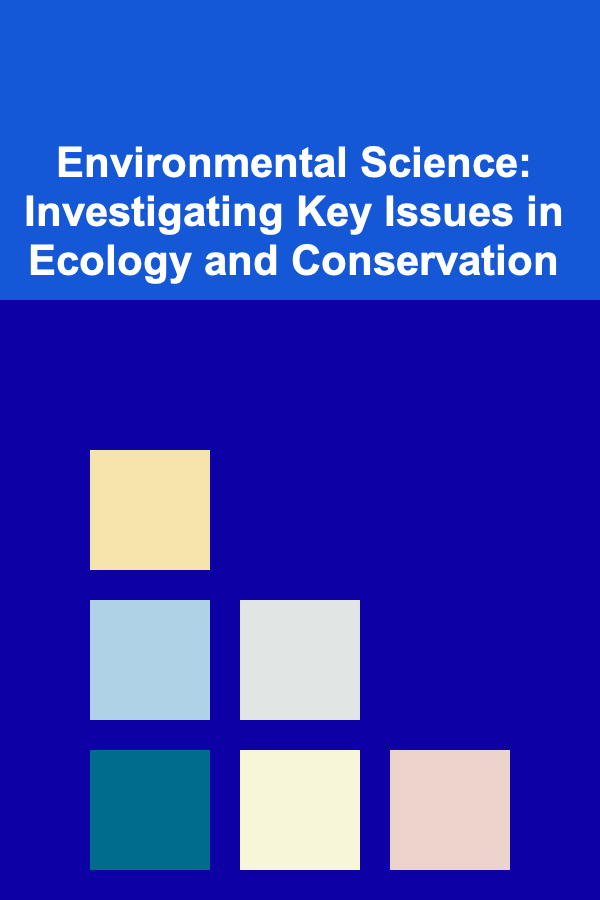
Technical Writer's Handbook: Strategies for Writing Complex Technical Documents
ebook include PDF & Audio bundle (Micro Guide)
$12.99$6.99
Limited Time Offer! Order within the next:

Technical writing is an essential skill in today's information-driven world. It plays a pivotal role in creating clear, accurate, and user-friendly documentation that helps individuals understand and interact with complex systems, products, or services. Whether you're writing user manuals, API documentation, or technical specifications, your ability to communicate technical information effectively is crucial. This guide will explore the strategies and best practices for writing complex technical documents that engage users and help them succeed.
Understanding the Purpose of Technical Documentation
Before diving into the specifics of technical writing, it's essential to understand its core purpose. Technical documentation serves several important functions:
- Clarification of Concepts: It aims to explain complex topics and concepts in a way that is understandable to the intended audience, whether they are technical experts, engineers, or non-specialist users.
- Instruction and Guidance: Good technical writing provides clear instructions that help users navigate systems or complete tasks effectively.
- Consistency: It maintains a consistent voice and terminology throughout the document to avoid confusion and ensure clarity.
- Support: Documentation provides essential information that users can refer to when they need assistance with troubleshooting, problem-solving, or decision-making.
To write successful technical documents, you need to adopt a structured approach that balances thoroughness and clarity while catering to the needs of your audience.
Strategy 1: Know Your Audience
Understanding your audience is the first and most important step in writing technical documentation. The effectiveness of your writing will largely depend on how well you know who will be reading your document. Here are the steps to ensure that your content is appropriate for the intended audience:
1.1. Audience Profiling
- Identify User Expertise: Determine whether your readers are technical professionals (developers, engineers, etc.), non-technical users (end-users, customers), or a mix of both. This will influence the level of technicality and complexity of the language you use.
- Understand User Needs: Consider the problems users are trying to solve with your documentation. Are they looking for troubleshooting help, setup instructions, or an overview of a product? Tailoring your content to meet these needs ensures the document is practical and useful.
- Consider Cultural Context: If your documentation is intended for an international audience, you may need to take into account cultural and language differences. Always be mindful of potential language barriers, idioms, or colloquialisms that may be misunderstood in different regions.
1.2. Define the Purpose and Scope
Your audience will dictate what type of information is necessary. A clear understanding of your document's goal helps avoid unnecessary information or overly complex explanations. For example:
- End-users may need step-by-step guides or troubleshooting instructions.
- Developers may need API references, configuration details, or system requirements.
- Project managers may need overview documents or summaries of technical specifications.
Strategy 2: Structure and Organization
One of the most important strategies in writing complex technical documents is having a clear structure. A well-organized document helps readers find the information they need quickly and easily, which is especially important for users who may be under time pressure or working on a task.
2.1. Create a Logical Outline
Planning your document before you start writing will save you time and effort. Here's a simple approach:
-
Start with a High-Level Overview: Provide an introductory section that gives context. This can include a purpose statement, system overview, and key concepts.
-
Break Information into Logical Sections: Group related information together under headings and subheadings. For example, a user manual for software might include sections like:
- Installation
- System Requirements
- Features
- Troubleshooting
- FAQ
-
Use Consistent Terminology: Consistency in terminology is key to avoiding confusion. Ensure that terms are defined early on and used consistently throughout the document.
2.2. Use Clear Headings and Subheadings
Using headings and subheadings effectively helps readers scan the document and locate the information they need. Your headings should:
- Be descriptive and succinct
- Reflect the content in that section
- Follow a hierarchical structure (e.g., Chapter -> Section -> Subsection)
2.3. Visual Aids and Diagrams
Technical concepts can often be difficult to grasp with text alone. Where appropriate, incorporate visuals such as diagrams, flowcharts, and screenshots to clarify complex information. Ensure that these visuals are:
- Well-Labeled: Provide clear titles, captions, and legends for your images.
- Relevant: Only include visuals that add value to the text and help explain the concept more effectively.
- Accessible: For accessibility, add alt text to images, ensuring visually impaired users can also benefit from the documentation.
Strategy 3: Simplifying Complex Information
One of the core challenges in technical writing is making complex topics understandable without losing the technical accuracy that your readers need. To do this, consider the following approaches:
3.1. Break Down Complex Ideas
Avoid overwhelming the reader with large chunks of technical information. Break down complex ideas into manageable steps:
- Use Lists: Break lengthy explanations into bulleted or numbered lists. This makes information digestible and easy to follow.
- Define Terms: Technical jargon and acronyms should be defined as soon as they are introduced. If necessary, include a glossary section to explain commonly used terms.
- Use Analogies and Examples: When possible, use analogies that relate complex concepts to everyday experiences. This helps demystify complex topics for users who may not have deep technical expertise.
3.2. Use Active Voice
Passive voice can make technical writing unclear and more difficult to read. Wherever possible, use active voice to make the subject of the sentence clear. For example:
- Passive: "The button should be pressed by the user."
- Active: "Press the button."
Active voice is more direct and engaging, which helps improve readability.
3.3. Avoid Ambiguity
Technical writing should be as precise as possible. Avoid vague language that could lead to misinterpretation. For example, instead of saying "click the button several times," specify how many times the user should click, like "click the button three times."
Strategy 4: Writing for Clarity and Precision
Clarity and precision are the cornerstones of effective technical writing. Here are some key strategies to ensure your document is both clear and accurate:
4.1. Use Simple and Concise Language
While technical documents often require specialized vocabulary, avoid unnecessarily complex or dense language. Strive for simplicity and clarity. Short sentences, simple words, and straightforward descriptions make the text easier to understand, especially for non-native speakers or users with limited technical knowledge.
4.2. Consistency in Formatting
Formatting plays a crucial role in improving the readability and flow of technical documentation. To ensure consistency:
- Use Uniform Font and Style: Stick to one font type and size throughout the document. Headings, subheadings, and body text should follow a clear style hierarchy.
- Align Text for Readability: Ensure proper alignment, spacing, and indentation to guide the reader through the document smoothly.
- Highlight Key Information: Use bold or italics to emphasize critical instructions or important points. However, avoid overuse, as it can reduce the emphasis.
4.3. Review and Edit Thoroughly
Technical documents often undergo multiple iterations before they are ready for publication. Editing is an integral part of the process to ensure clarity and precision. Here are some editing tips:
- Read Aloud: Reading the document aloud helps catch awkward phrasing and unnatural sentence structures.
- Check for Ambiguity: Make sure all technical terms are defined and that there is no ambiguity in instructions.
- Peer Reviews: Involve subject matter experts or other writers in the review process. A fresh pair of eyes can catch issues you might have missed.
Strategy 5: Incorporating Feedback and Continuous Improvement
Finally, once your document is in use, it's essential to incorporate feedback from users and continuously improve it. Here's how:
5.1. Gather User Feedback
Monitor how users interact with your documentation. Are they able to follow the instructions without difficulty? Are there sections where they frequently seek additional help or clarification? Conduct surveys or interviews with users to gather feedback and identify areas for improvement.
5.2. Iterate Based on Feedback
As you receive feedback, make necessary revisions. Keep track of recurring issues or suggestions and address them in future versions of the document. Regular updates will help ensure that the documentation remains relevant and effective over time.
5.3. Keep Documentation Up to Date
Technical products or systems evolve over time, and so should your documentation. Regularly update your documents to reflect new features, system changes, or improvements to keep them aligned with the latest product or service.
Conclusion
Writing complex technical documents requires a delicate balance of clarity, precision, and organization. By understanding your audience, structuring your document logically, simplifying complex information, and continuously improving based on feedback, you can produce documentation that helps users understand and utilize technical products effectively. The strategies outlined in this guide will help you enhance your technical writing skills and produce documents that are both useful and user-friendly.

Becoming a Successful User Interface Designer: Strategies for Effective UI Solutions
Read More
Environmental Science: Investigating Key Issues in Ecology and Conservation
Read More
How to Create a Functional Family Room with Thoughtful Arrangements
Read More
How to Organize Your Bath Products for a Streamlined Routine
Read More
How to Understand the Flora and Fauna of Your Hiking Area
Read More
Turning Deep Learning into a Profitable Passive Income Source
Read MoreOther Products

Becoming a Successful User Interface Designer: Strategies for Effective UI Solutions
Read More
Environmental Science: Investigating Key Issues in Ecology and Conservation
Read More
How to Create a Functional Family Room with Thoughtful Arrangements
Read More
How to Organize Your Bath Products for a Streamlined Routine
Read More
How to Understand the Flora and Fauna of Your Hiking Area
Read More